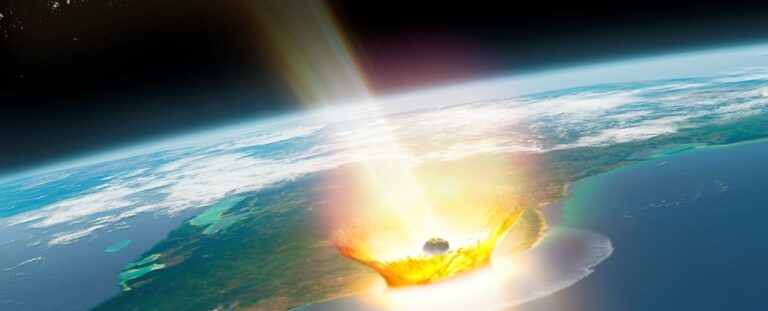We’ve Finally Discovered the Origin of the Asteroid That Wiped Out the Dinosaurs
It has been found out by new study that the space rock that caused the death of all forms of life on earth sixty-six million years ago took an unusually long way before settling to its final destructive blow. Cretaceous–Paleogene event that brought about the end of dinosaurs aside from birds and the beginning of the age of mammals resulted from an asteroid belonging to the outer part of the Solar System farther than Jupiter.

The study, led by an international team of scientists, shows that the object was an asteroid and that it cannot have been a comet. The new discovery brings new information concerning the history of Earth and its relations with the rest of the solar system.
Earth has been hit by big space rocks all through its existence and some of the impacts were perhaps significant in bringing water to the planet. As you might expect, it is difficult to trace these collisions but there are several giant impact craters that speak volumes about the history of the planet.
There have been several mass extinctions throughout Earth’s history, yet the only one can be certainly attributed to an impact event is the Cretaceous-Paleogene extinction which happened 66 million years ago. It was this event that caused about 76 percent of all the animal species particularly the non-avian dinosaurs to be annihilated. It occurred around 66 million years ago when an asteroid that is about 10 kilometers (6 miles) in diameter impacted present day Yucatan Peninsula leaving behind a large crater and causing mass extinction leading to changes of the texture of life on the planet.

On the other hand, the Chicxulub impact was not the only event which took place on the Earth during that time period. Using multirecord data and fossil abundance proxy indices before and after Cretaceous-Paleogene boundary, the authors found that, about one million years before and after the event, a large volcanic area called the Deccan Traps was also active and continually releasing significant quantities of volcanic materials into the atmosphere. This activity is another potential source of PGE’s that were identified within the boundary layers of the samples.
A team led by geochemist Mario Fischer-Gödde from the University of Cologne in Germany intended to try to estimate whether these minerals were of extraterrestrial origin and if so, whether they could be matched with a certain sort of meteorite.
They concentrated on the ruthenium mineral which was reported to be containing several isotopes in the boundary layer. Isotopes are recognitions of the same element with a different number of neutrons, therefore the ratios of the isotopes is a unique signature. In the terrestrial ruthenium there is a shift of isotopic ratios as compared to the meteorites.
The team analyzed ruthenium samples from the boundary layer at five different locations: one originated from Spain, one Italy and three from the chalk cliffs of Stevns, Denmark. They also studied ruthenium featuring five other impacts within the past half a billion years and spherule layers which are meteorite fragments in micro size dating back to 3. 5 to 3. 2 billion years ago.
Furthermore, the researchers performed isotopic analysis of ruthenium in actual meteorites and compared these data with terrestrial reference samples of ruthenium formed in the Earth. By making a comparison they were able to determine that the ruthenium in the Cretaceous-Paleogene boundary layer was of extraterrestrial origin.
Furthermore, the signature of the ruthenium showed that it was most compatible with a type of asteroid that is relatively unheard of, called the carbonaceous chondrite, which is packed with organic carbon and hail from regions beyond the orbit of Jupiter.
While the other five impacts were made by siliceous asteroids which are common on earth and are usually located nearer to the sun. The layers of spherules that can be dated back to the earlier times were carbonaceous in nature and these came from space after Earth’s mass add up process.
These studies therefore finally point out the type of rock, which brought about such disastrous impact. Jupiter is considered to have a role of protecting the outer Solar System’s objects in that it captures the asteroids in its orbit and thus, does not allow the asteroids to venture further in its inner environment. Occasionally this happens, but most of the time they crash through in much smaller chunks than the Chicxulub impactor.
This raises an intriguing question: why was it that that asteroid from the ancient ages appeared to have set it’s sights on the dinosaurs? The science may never be able to explain it either.
The research has been published in Science.
Do not forget to share your opinion with us to provide you with the best posts !




0 Comments